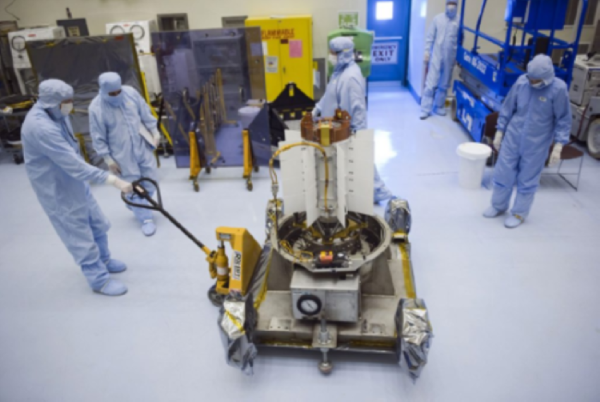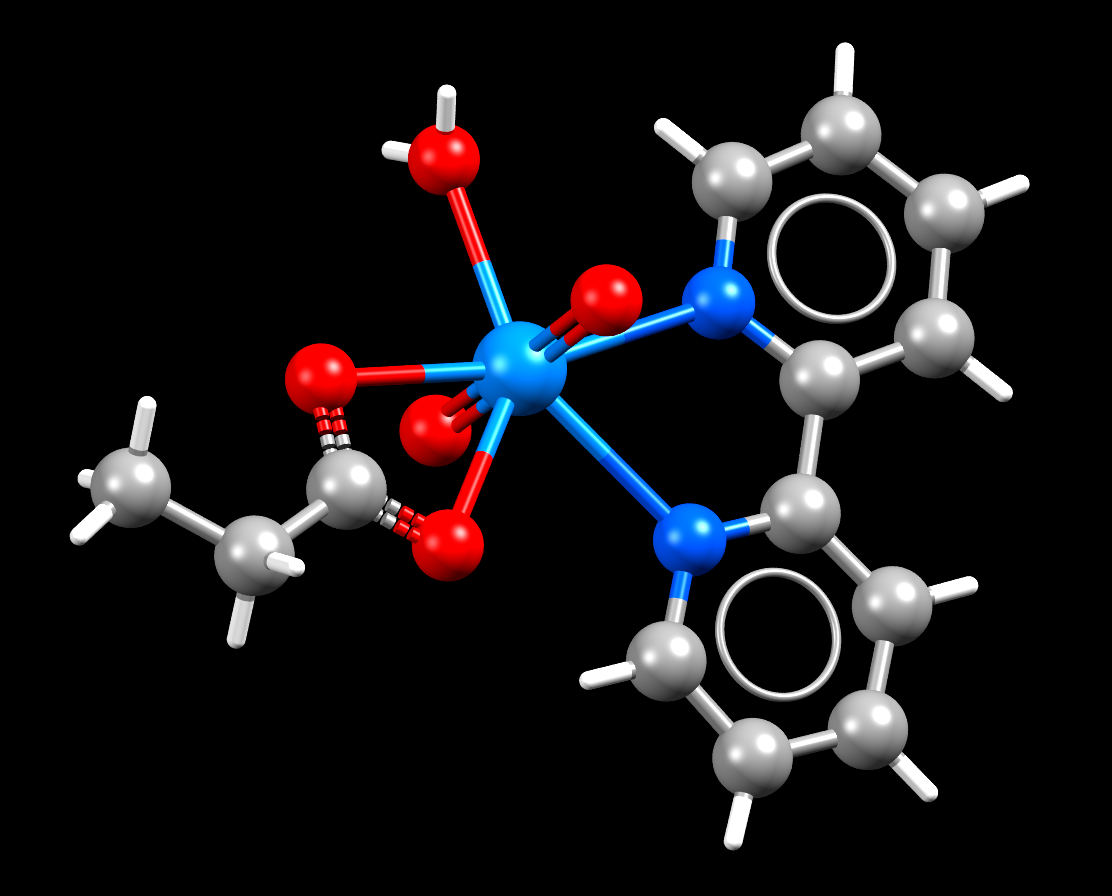Neptunium
Neptunium:

Image of Neptunium that was bombarded with neutrons to produce Plutonium-238, and used spacecraft batteries.
Facts about Neptunium:
- Nickel: Silvery-white ductile metal
- Fun fact about Neptunium: Neptunium is estimated to have the largest difference in melting point and boiling point. Its melting point is 644 deg.C, and its boiling point is 417 deg.C.
- Chemical symbol: Np
- Atomic number: 93
A crystal structure containing Neptunium:

The image shows how neptunium is in the center attached to either oxygen or nitrogen within the Metal Organic Framework structure.
Facts about this structure:
- Formula: C13 H15 N2 Np O5
- Structure name: Aqua-(2,2′-bipyridine)-bis(oxo)-propanoato-neptunium(v)
- Fun fact about the structure: A single crystal of this structure was crystallized and then analyzed through X-Ray analysis and it was found to have an identical structure to the equivalent Plutonium (Pu(V)) structure meaning they are isomorphous.
- CSD refcode: AXUWIA (What’s this?)
- Associated publication: N.N.Krot, I.A.Charushnikova, M.S.Grigor’ev, A.A.Bessonov, I.N.Polyakova, Radiokhimiya, 2010, 52, 12, DOI: 10.1134/S1066362210010030
More about Neptunium:
Neptunium is located between uranium and plutonium which are 2 very radioactive materials. Because of its number of protons (92-94) and its large size, neptunium can go through nuclear fission. It is not as commonly used as the other 2 radioactive elements but is still important because it is produced from the nuclear reaction. This nuclear reaction can produce harmful radioactive waste that can last for millions of years. The majority of neptunium is created as a byproduct of reactions in nuclear power plants. Neptunium has never been actually used and has only been considered to be used as a fissile nuclear fuel.
Learn More About the International Year of the Periodic Table (IYPT) in Crystals Project:
This project (#IYPTCrystals) is part of the International Year of the Periodic Table celebration (#IYPT2019), read more about the project here.
You can follow us on social media; search for #IYPTCrystals or follow The CCDC on X @ccdc_cambridge on Facebook ccdc.cambridge, on Instagram ccdc_cambridge or on YouTube CCDCCambridge.
Understand some of the terms and concepts used with our Frequently Asked Questions page here.
A 3D visualization showing Neptunium in real crystal structures: